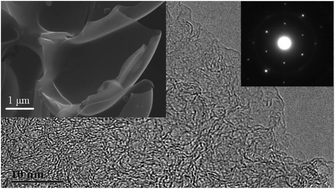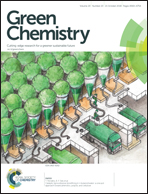The improvement of pitch activation by graphene for long-cycle Li–S batteries†
Abstract
It is interesting to convert industrial pitch to carbon based materials with high yield for energy storage owing to environmental and energy concerns. In this study, we activated coal tar pitch by a green process to obtain porous carbon sheets sandwiched by graphene, and further impregnated with 71% sulphur as the cathode for long-term cycling lithium–sulphur battery. In the presence of 4.0% of electrochemically exfoliated graphene flakes, the yield of carbon from pitch is as high as 72%, while the activation temperature of the pitch is as low as 700 °C. This carbon sheet has a high specific surface area of 2930 m2 g−1 and large pore volume of 1.5 cm3 g−1, which is nearly 3 times that of activated carbon derived from pitch without graphene. The cathode loaded with 71% sulfur (3.0 mg cm−2 of sulphur) demonstrated a discharge capacity of 1340 mA h g−1 at 0.05 C, which faded by only 0.001% per cycle at 1 C during 201–1500 cycles. Surface oxygen groups, 1.1 nm nanopore confinement and the sandwich structure of conductive graphene may contribute to the stable and reversible electrochemical reaction of the Li and sulphur clusters. Our investigation demonstrates that graphene can enhance the pitch activation to high quality microporous carbon and further confine sulphur species for long-term cycling Li–S batteries.



 Please wait while we load your content...
Please wait while we load your content...